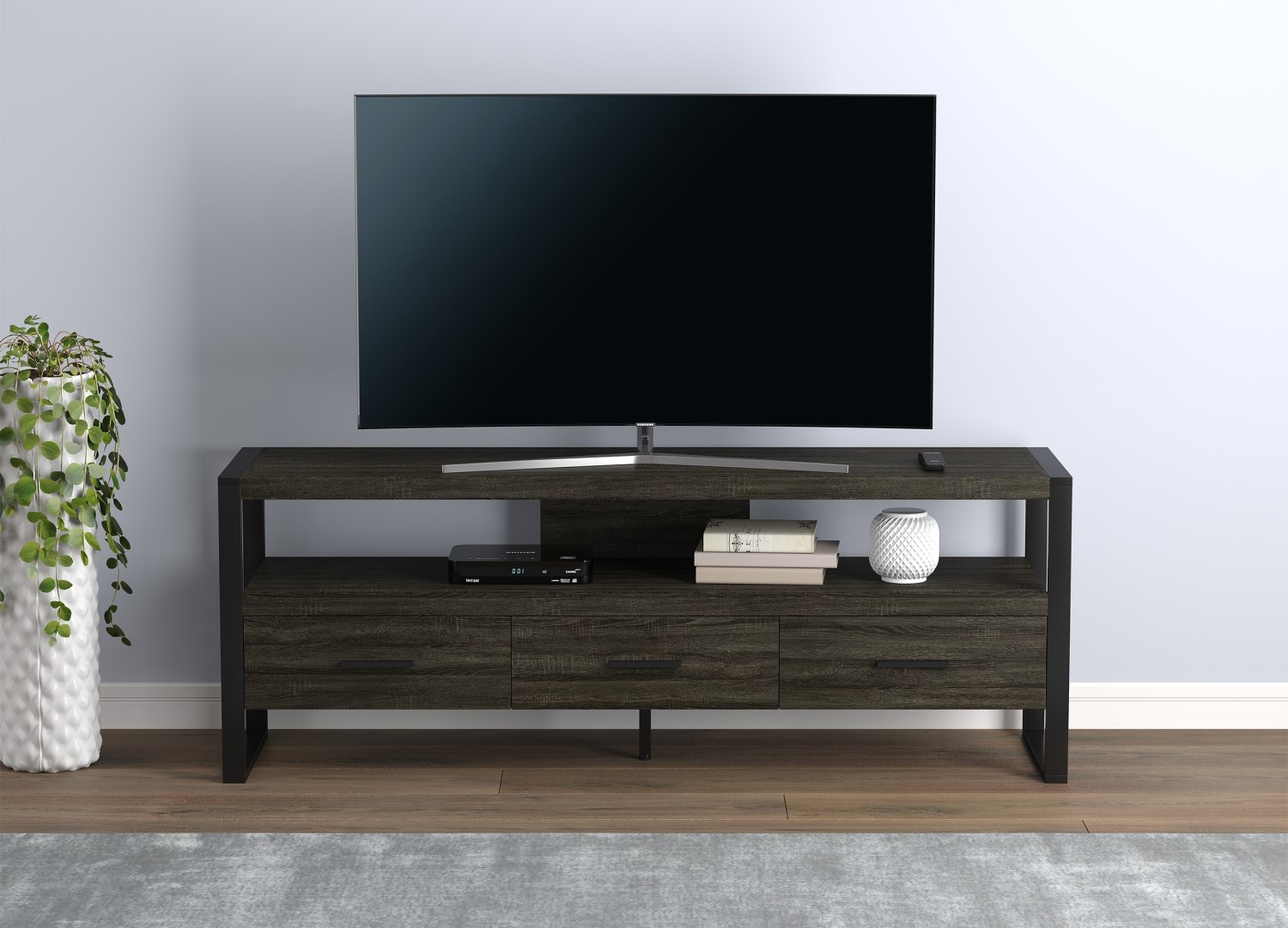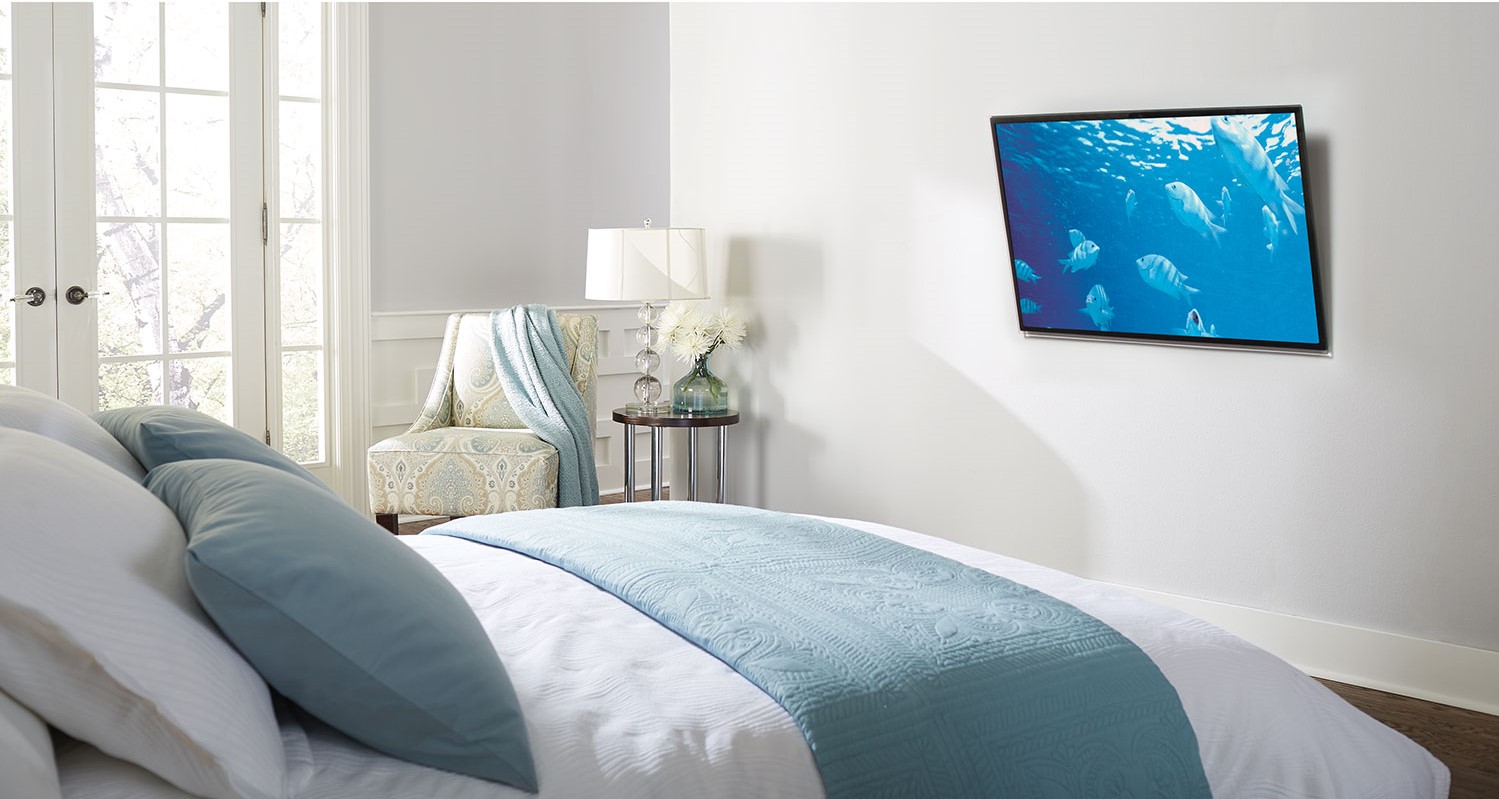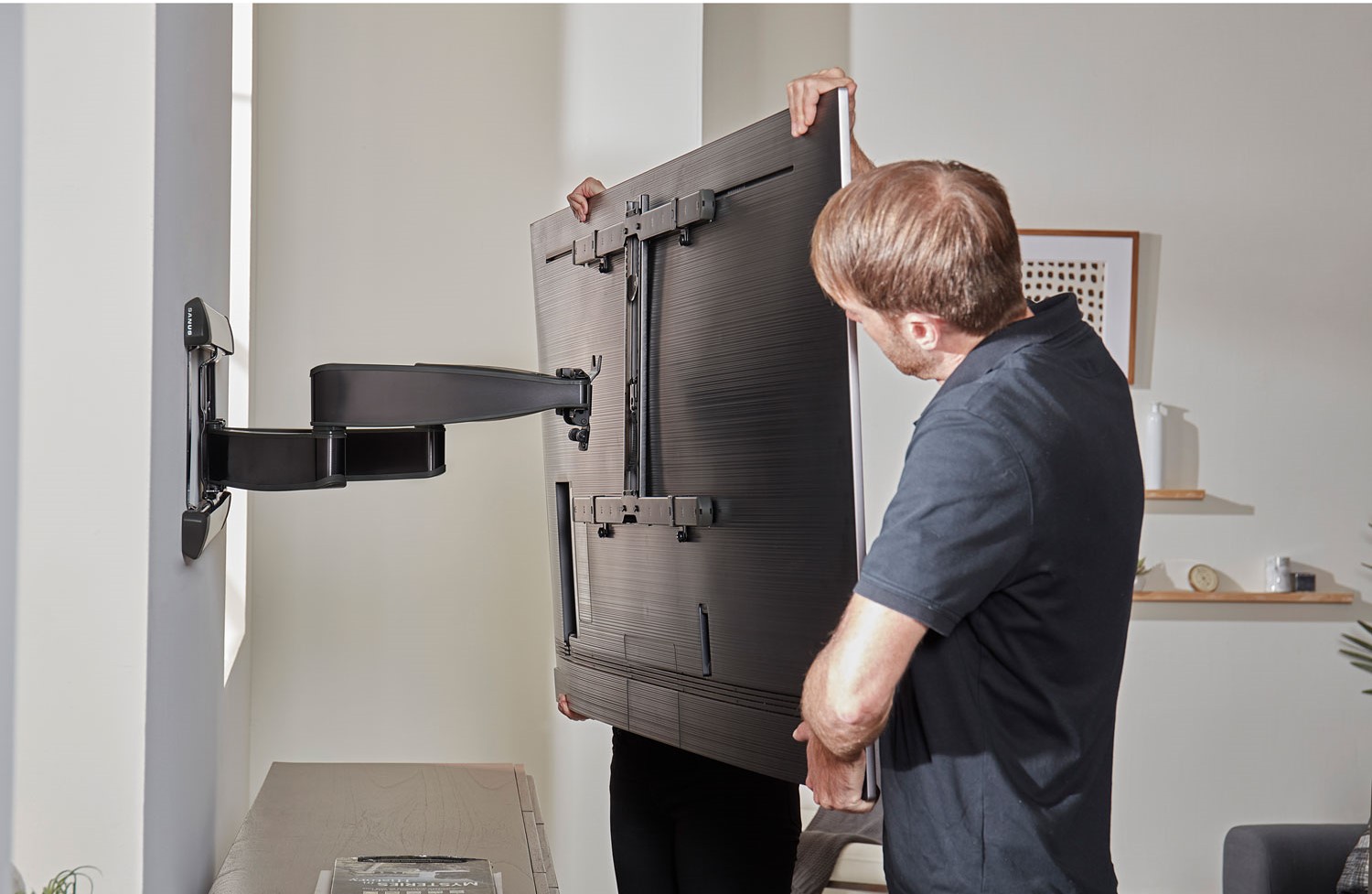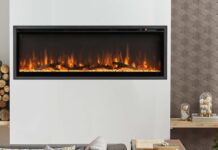
New televisions are bigger, thinner, and lighter than ever before. With respect to home living, this provides a variety of placement options for flat-screen televisions. There are a range of TV mounts and stands to choose from, so it can be tough to know which one is right for you.
This guide is here to help. I’ll discuss all the options available for TV placement in your home. I’ll talk about the benefits of TV mounts and stands, and provide some helpful tips and tricks. By the end of it, you should know exactly what you need for your TV and personal setup at home.
How to choose traditional TV stands
Televisions are designed to sit on a traditional TV stand. Also known as a media stand, entertainment cabinet, or TV table— a TV stand sits on the ground. The TV sits on top of the unit and there are usually shelves or storage cabinets in the middle.
There is a wide range of TV stands ranging from rustic, traditional, contemporary, and fireplace. There are even corner TV stands available that work great in tight spaces with limited room.

What are the benefits of TV stands?
TV stands are a great option if you need or want to place a TV in a dedicated, fixed location. This could be in a living room or game/entertainment room. The height of a TV stand can vary. For example, fireplace stands tend to sit higher than contemporary stands.
Before you get a stand you should know in advance how high you want the TV to be. Sit on the couch and imagine where the TV would have to be for comfortable viewing. This will help you narrow down the type of TV stand to get. You can take a look at the TV buying guide for a better idea of placement.
TV stands have a lot of benefits, especially for TVs placed in living and entertainment rooms. They allow you to neatly store a host of devices (i.e. gaming consoles, soundbars, audio receivers) under the TV. This makes it the perfect choice for home entertainment rooms. Everything is connected together, and the cables are neatly hidden in the back.
How to choose a TV wall mount
Another popular option is TV wall mounts. Mounting a TV on the wall provides more floor access and design options. These mounts are screwed into the studs behind a wall. This allows them to hold a considerable amount of weight. Each TV stand will mention its maximum load capacity. As TVs are getting lighter, weight is becoming less of an issue.
Most people can do the installation themselves, but Geek Squad also offers installation services for TV wall mounts.
What are the benefits of TV wall mounts?
TV wall mounts help clear up floor space usually taken up by TV stands. This can help create a clutter-free environment, especially for people who live in small spaces like apartments and condos.
It’s also a good choice for parents with toddlers or young children. Many kids these days try to swipe at a TV screen like a smartphone or tablet. By keeping everything mounted high up on the wall, parents have peace of mind knowing a child cannot touch the TV.
There are a range of TV wall mounts available so it’s important to know how each one works.
What are the different types of TV mounts?
Fixed or low profile wall mounts
Fixed or Low-Profile mounts hold a television in a fixed position. They’re also called low-profile mounts because the TV sits very close to the wall. These mounts are purposely-designed to keep a television in a locked position that cannot be adjusted.

Tilting wall mounts
Tilting mounts have a similar design to fixed mounts except they include a mechanism that tilts the TV downward. This is a good choice for TVs that are being installed higher up on a wall. This can help reduce neck or eye strain and reduce sun glare in particular rooms.
To accommodate the tilt, they do tend to have more space between the wall in the back. A good tip is to utilize the extra space. You can neatly organize cables and even attach media streamers directly to the back of a TV.
Full motion wall mounts
Full motion mounts allow you to move a television in any direction. They are also sometimes referred to as articulating or swiveling mounts. This is because it features an arm that moves in all directions.
It supports full vertical and horizontal movement providing users with ultimate flexibility. Unlike low-profile mounts, it requires more space in the back between the TV and the wall. This is to make space for the articulating arm. It can be pushed fully back to the wall or pushed forward to allow the TV to swivel in all directions. Hence, this provides the widest field of view out of all the mounts.

3-in-1 TV stands with mounts
3-in-1 TV stands with mounts combine elements from each mount into one unit. This provides users with space to store entertainment devices and the ability to mount a TV above them. The advantage of this setup is that you don’t need to mount directly into a wall, These units come with a mounting bracket that connects to the stand. This is a good choice for renters or anyone who doesn’t want to put holes into the wall.
Should you choose a TV mount or TV stand?
If you’re setting up a dedicated home theatre room, a TV stand or 3-in-1 TV stand is a good choice. It provides plenty of room to store gaming consoles, routers, and home audio & theatre devices. Cables can be neatly tucked away in the back to create a clean, organized setup.
If you’re trying to maximize space or keep things off the ground away from young children, then a TV mount is your best bet. The type of mount will depend on your particular needs. However, it’s a good idea to know what kind of studs are behind your wall. Most detached homes have wood studs but some apartments and condos have steel studs. If you’re not comfortable doing the installation yourself, Geek Squad can help you mount your TV to the wall.
No matter what kind of mount or stand you choose, Best Buy has you covered to create the perfect TV setup.





